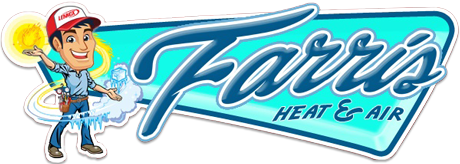
A furnace is usually a background player in your home, keeping you warm across the cold winter months. It frequently isn't noticed until something goes wrong.
One source might be that your furnace has a cracked heat exchanger. It can be a safety risk, so it’s critical to learn the symptoms of a cracked heat exchanger and what to do if you are worried that may be the problem.
What Is a Heat Exchanger in a Furnace?
A heat exchanger helps move heat from the combustion chamber of your furnace to the air that flows throughout the ventilation. It typically accomplishes this using coils or tubes that heat up the air while functioning as a barrier to keep gas formed in the combustion chamber, called flue gasses, from getting out into your home.
Is a Cracked Heat Exchanger Dangerous?
Thanks to its central role, it shouldn't come as a surprise that a damaged heat exchanger can be very dangerous. Cracks in the heat exchanger can enable dangerous gasses – including carbon monoxide, which can be lethal – to circulate throughout your home.
For obvious reasons, do NOT run your heater if you suspect there's a crack in the heat exchanger, as doing so could make the entire household sick. Contact an HVAC professional as soon as possible if you think your furnace has a cracked heat exchanger that should be repaired.
Four Symptoms of a Cracked Heat Exchanger:
- Furnace switches off: A cracked heat exchanger could cause your furnace to shut off.
- Odd Smells: If the air leaving your furnace has an intense chemical scent, it may be an indicator that gas is seeping through cracks in your heat exchanger. These gasses, which can smell like formaldehyde, are a common warning sign.
- Carbon monoxide alarm initiates or you feel health problems: If a cracked heat exchanger is emitting carbon monoxide inside your home, your carbon monoxide alarm should go off or family members might start experiencing signs of carbon monoxide poisoning. Side effects include headaches, dizziness, weakness, nausea, vomiting or feeling sleepy. If the alarm goes off or you feel unusually tired, get out of the home immediately and then call for help.
- Soot: If you spot black sooty buildup on the exterior of your furnace, it’s more evidence something may be seriously wrong.
What You Can Do if Your Furnace Heat Exchanger is Cracked
If you worry your furnace has a cracked heat exchanger, hire a pro experienced in furnace installation Bartlesville as soon as possible so they can inspect your system and, if needed, handle a furnace heat exchanger replacement. Costs often fluctuate depending on the situation, but estimates often hover around $1,000 to $3,000.
Fortunately, the good news is that heat exchangers are generally protected by the warranty. It's a good idea to check the warranty paperwork on your furnace, since while the warranty may not cover the entire cost of repairs, it can significantly lower your bill.
How to Avoid a Cracked Heat Exchanger in Your Home
One of the easiest ways to minimize the risk of problems in your furnace overall is with consistent furnace maintenance. Furnaces offer the most benefits when they operate efficiently. Contacting a trained professional to check your furnace for worn-out parts, dirty filters and other common problems can keep you from getting a big bill later on.
It’s also helpful to take a look at your furnace filters every few months – it’s recommended some filters be replaced every 90 days or sooner if they are dirty or grimy. While the filters aren't a part of the heat exchanger itself, the strain of dragging air through a clogged filter makes the entire furnace work longer to do its job. And the harder your furnace works, the more deterioration pieces like the heat exchanger will endure.
